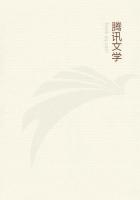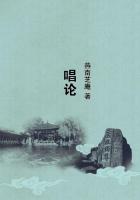At the time when Fabricius (Johann Christian Fabricius (1745-1808), a noted Danish entomologist, author of "Systema entomologiae" (1775).--Translator's Note.) gave the genus Anthidium its name, a name still used in our classifications, entomologists troubled very little about the live animal; they worked on corpses, a dissecting-room method which does not yet seem to be drawing to an end. They would examine with a conscientious eye the antenna, the mandible, the wing, the leg, without asking themselves what use the insect had made of those organs in the exercise of its calling. The animal was classified very nearly after the manner adopted in crystallography. Structure was everything; life, with its highest prerogatives, intellect, instinct, did not count, was not worthy of admission into the zoological scheme.
It is true that an almost exclusively necrological study is obligatory at first. To fill one's boxes with insects stuck on pins is an operation within the reach of all; to watch those same insects in their mode of life, their work, their habits and customs is quite a different thing. The nomenclator who lacks the time--and sometimes also the inclination--takes his magnifying-glass, analyzes the dead body and names the worker without knowing its work. Hence the number of appellations the least of whose faults is that they are unpleasant to the ear, certain of them, indeed, being gross misnomers. Have we not, for instance, seen the name of Lithurgus, or stone-worker, given to a Bee who works in wood and nothing but wood? Such absurdities will be inevitable until the animal's profession is sufficiently familiar to lend its aid in the compiling of diagnoses. I trust that the future will see this magnificent advance in entomological science: men will reflect that the impaled specimens in our collections once lived and followed a trade; and anatomy will be kept in its proper place and made to leave due room for biology.
Fabricius did not commit himself with his expression Anthidium, which alludes to the love of flowers, but neither did he mention anything characteristic: as all Bees have the same passion in a very high degree, I see no reason to treat the Anthidia as more zealous looters than the others. If he had known their cotton nests, perhaps the Scandinavian naturalist would have given them a more logical denomination. As for me, in a language wherein technical parade is out of place, I will call them the Cotton-bees.
The term requires some limiting. To judge by my finds, in fact, the old genus Anthidium, that of the classifying entomologists, comprises in my district two very different corporations. One is known to us and works exclusively in wadding; the other, which we are about to study, works in resin, without ever having recourse to cotton.
Faithful to my extremely ****** principle of defining the worker, as far as possible, by his work, I will call the members of this guild the Resin-bees. Thus confining myself to the data supplied by my observations, I divide the Anthidium group into equal sections, of equal importance, for which I demand special generic titles; for it is highly illogical to call the carders of wool and the kneaders of resin by the same name. I surrender to those whom it concerns the honour of effecting this reform in the orthodox fashion.
Good luck, the friend of the persevering, made me acquainted in different parts of Vaucluse with four Resin-bees whose singular trade no one had yet suspected. To-day, I find them all four again in my own neighbourhood. They are the following: Anthidium septemdentatum, LATR., A. bellicosum, LEP., A. quadrilobum, LEP., and A. Latreillii, LEP. The first two make their nests in deserted Snail-shells; the other two shelter their groups of cells sometimes in the ground, sometimes under a large stone. We will first discuss the inhabitants of the Snail-shell. I made a brief reference to them in an earlier chapter, when speaking of the distribution of the ***es. This mere allusion, suggested by a study of a different kind, must now be amplified. I return to it with fuller particulars.
The stone-heaps in the Roman quarries near Serignan, which I have so often visited in search of the nests of the Osmia who takes up her abode in Snail-shells, supply me also with the two Resin-bees installed in similar quarters. When the Field-mouse has left behind him a rich collection of empty shells scattered all round his hay mattress under the slab, there is always a hope of finding some Snail-shells plugged with mud and, here and there, mixed with them, a few Snail-shells closed with resin. The two Bees work next door to each other, one using clay, the other gum. The excellence of the locality is responsible for this frequent cohabitation, shelter being provided by the broken stone from the quarry and lodgings by the shells which the Mouse has left behind.
At places where dead Snail-shells are few and far between, as in the crevices of rustic walls, each Bee occupies by herself the shells which she has found. But here, in the quarries, our crop will certainly be a double or even a treble one, for both Resin-bees frequent the same heaps. Let us, therefore, lift the stones and dig into the mound until the excessive dampness of the subsoil tells us that it is useless to look lower down. Sometimes at the moment of removing the first layer, sometimes at a depth of eighteen inches, we shall find the Osmia's Snail-shell and, much more rarely, the Resin-bee's. Above all, patience! The job is none of the most fruitful;nor is it exactly an agreeable one. By dint of turning over uncommonly jagged stones, our fingertips get hurt, lose their skin and become as smooth as though we had held them on a grindstone.
After a whole afternoon of this work, our back will be aching, our fingers will be itching and smarting and we shall possess a dozen Osmia-nests and perhaps two or three Resin-bees' nests. Let us be content with that.















